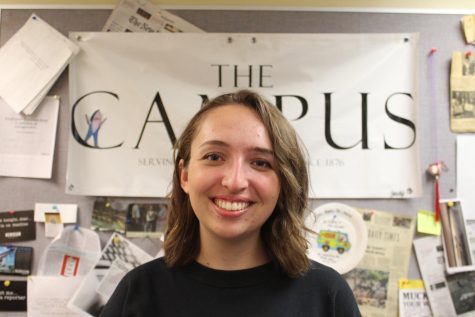When will it end?
Student shot at Erie High School
There’s been another one, and this time, it’s in our own backyard.
A shooter opened fire at Erie High School on Tuesday morning, injuring one student before fleeing.
Less than an hour later, the litany so unique to the United States began: “Thoughts and prayers” circulated, police officers gave interviews to local news, students cried as they escaped the school building into the arms of their families, classes were canceled for the rest of the week, and national outlets picked up the story with varying degrees of political spin.
In the coming days, there will inevitably be an outcry for increased legislation and regulation, and that outcry will be met with backlash and vitriol. (After all, “only” one student was shot, and they survived.) A community will rally, therapy will be offered and some somber-yet-catchy hashtag will spread across Twitter.
So, it is once again time to ask the question that reappears after every school shooting: when will this end?
We have fallen into a state of complacency. This is not news. Every fresh cry for reform, for safety and security, for any sign of concern from officials, now feels like a Sisyphean exercise in pleading. It will always go unheard and deferred.
Superintendent of Erie Public Schools Brian Polito called the event “a reflection of a troubling rise in youth violence.” It is true that shootings are on the rise. But placing the blame squarely on the immorality of the wild youth is an evasion of the highest order. Officials are kidding themselves if they genuinely believe that youth violence, an age-old scapegoat, shares more responsibility for the continued prevalence of school shootings in America than lackluster policies and the deathgrip the NRA has on our government.
The oldest member of The Campus’s staff was born eight months after the Columbine massacre. Every single member of our staff has only known an America where violence in schools is not just feared, it is anticipated.
We learned how to cover the windows and barricade the doors. Our school days were interrupted with lockdowns — nobody knew if they were real threats or practice for the inevitable. Our teachers told us that they would defend us with their bodies. We all crammed together in supply closets in the dark, training for the day we must hide.
State Senator Dan Laughlin said the shooting demonstrates the “need to give our schools the resources and tools they need to provide for the safety of our children and teachers.”
We know just how little the safety of children and teachers matters to those who profess its importance. They say that there were no police in the school, that there were no metal detectors or pat-downs or backpack searches. If only we had these measures in place, then maybe, just maybe, this crime could have been prevented.
This approach, too, ignores the larger issues at hand. Why must going to public school in America feel like entering a prison? And why, after measures such as these are implemented in schools, has the rate of shootings continued its upward trend? They are bandages — temporary workarounds to an injury that grows ever larger. This problem needs stitches.
When will it end? Nobody knows. But we can make a pretty good guess. Things are not going to change until the people in power choose to change them. The current systems — arming public schools to the teeth, filling them with cameras and metal detectors — only serve to create a hostile learning environment. If lawmakers truly cared about children’s educations as they vehemently asserted during the past few years of Zoom school, book banning and Critical Race Theory panic, then they would first and foremost do something about the psychological distress that the constant threat of being murdered in math class has on students.
The survivors of the Columbine massacre are now parents to school-aged children faced with the same deadly threats in their halls. When will it end? Only when there is a generation that does not have to be trained to fixate on the figures darting around corners, a generation to whom the word “lockdown” is something of the distant past. It will end when children no longer plan their goodbye texts to their parents in case they don’t make it home.
It will end when somebody finally has the courage to drive a wedge into this ever-grinding machine and offer something more than thoughts and prayers. Until then, we only deepen our cycle of ambivalence, normalizing what should never, ever be normal.
And then we wait for the next one.

Sydney Emerson is a member of the class of 2023. She is from Bradford, Pennsylvania and is an English major with a history minor.




